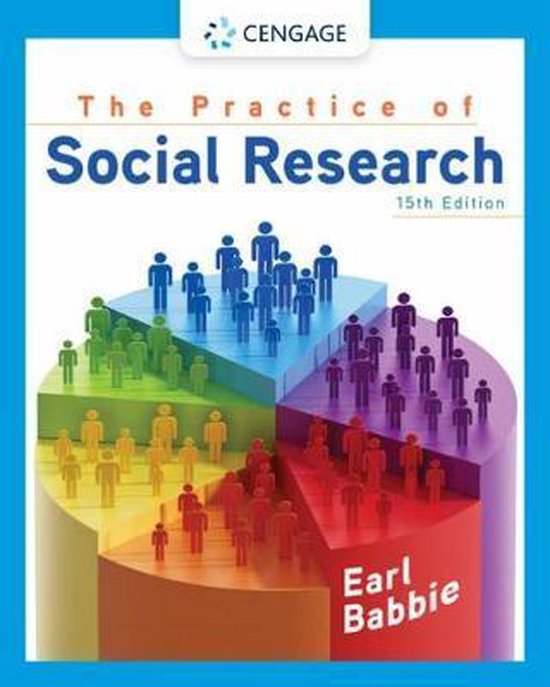Research Methodology and Descriptive
Statistics
TEST 1 (4 Oct. 24 – 08:45-10:45), covering the theory of units 1, 2, 3, 4, 5, 6, 7, 8, 9, 10, 11, and 26
Table of contents
Unit 1: What is empirical research? ............................................................................... 4
The Practice of Social Research - Earl Babbie Ch. 1 p. 3-13........................................... 4
Decision making and empirical research – Henk van der Kolk (article) ........................... 5
The empirical cycle (video)......................................................................................... 5
What do we mean by research (video) ......................................................................... 6
Empirical Research Questions in the context of Decision Making and Design (video) ...... 7
Confirmation Bias (video) .......................................................................................... 8
Conspiracy theories - Confirmation Bias (video) .......................................................... 9
Unit 2: What are clear research questions? .................................................................. 10
The Practice of Social Research – Earl Babbie. Ch. 1 p. 13-27 & Ch. 4 p. 89-92 ............. 10
Units and variables in empirical research questions (video) ........................................ 11
Different types of research questions (video)............................................................. 11
Developing empirical research questions (video) ....................................................... 13
Unit 3: What are data? ................................................................................................ 15
The Practice of Social Research – Earl Babbie Ch. 4 p 97-105 & Ch. 5 p. 141-145.......... 15
Units (video) ........................................................................................................... 16
Variables and levels of measurement (video) ............................................................ 18
Variables as constructions (video) ............................................................................ 19
(Broad format) data matrix (video) ............................................................................ 20
Missing values (video).............................................................................................. 23
Unit 5: Conceptualizing constructs .............................................................................. 24
1
, The Practice of Social Research – Earl Babbie Ch. 5 p. 125-138, Ch. 6 p. 159-162 & Ch. 6
p. 183-184 .............................................................................................................. 24
Conceptualization: constructs as combinations of facets (video) ............................... 25
Conceptualization: dimensions in concepts (video) ................................................... 26
Indices, typologies and scales (video) ....................................................................... 27
Conceptualizing variables: the "quality of the teacher"? (video) .................................. 28
Unit 6: Operationalization and data collection .............................................................. 30
The Practice of Social Research – Earl Babbie Ch. 5 p. 138-148................................... 30
Data collection methods (video)............................................................................... 30
Operationalization and measurement (video) ............................................................ 32
Surveys and questionnaires- using exist surveys: secondary data analysis (video) ........ 34
Unit 7: Measuring constructs using content analysis ..................................................... 36
The Practice of Social Research – Earl Babbie Ch. 11 p. 327-338 ................................. 36
Data collection methods: content analysis (video) ..................................................... 36
Conceptualization using interviews (video) ............................................................... 40
Content analysis and coding (1) Straightforward coding of short answers (video) ......... 42
Content analysis and coding (2) Coding longer texts using manifest and latent coding
(video) .................................................................................................................... 44
Content analysis and coding (3) Machine learning/ supervised learning (video) ............ 46
Content analysis and coding (4) Content analysis in more complex concepts (video) ... 47
Unit 8: Two aspects of data quality .............................................................................. 49
The Practice of Social Research – Earl Babbie Ch. 5 p. 148-155................................... 49
Carmines, E.G. & Zeller, R.A. (1979), Introduction. In: Carmines, E.G. & Zeller, R.A.,
Reliability and Validity Assessment. Thousand Oaks: SAGE, pp. 9-16 & 17-27. (article) . 49
Reliability and validity in measurement (video) .......................................................... 51
Measurement reliability (video) ................................................................................ 53
Measurement validity (video) ................................................................................... 55
Data quality: reliability (video) .................................................................................. 57
Unit 9 - Displaying univariate data in R ......................................................................... 60
The Practice of Social Research – Earl Babbie Ch. 14 p. 421-422 ................................. 60
2
, Graphs and shapes of distributions (video) ............................................................... 60
Unit 10 – Summarizing ratio variables .......................................................................... 62
The Practice of Social Research – Earl Babbie Ch. 14 p. 422-428 ................................. 62
Introducing the boxplot (video) ................................................................................. 62
Making boxplots (article) .......................................................................................... 64
Variance and standard deviation (video) ................................................................... 66
Unit 11 – Distributions and Z-scores in R ...................................................................... 67
Transforming data using Z-transformations (article) ................................................... 67
GZ-scores (video) .................................................................................................... 68
Unit 26 – Data collection methods and measurement ................................................... 70
Data collection method: interviews (video)................................................................ 70
Data collection method: validity and reliability threats in interviews (video) ................. 73
Data collection method: surveys (video) ................................................................... 74
Data collection method: observation (video) ............................................................. 77
Observations, some new techniques (video) ............................................................. 79
Data collection methods: focus group (video) ........................................................... 80
3
, Unit 1: What is empirical research?
The Practice of Social Research - Earl Babbie Ch. 1 p. 3-13
An assertion must have both logical and empirical support: It must make sense, and it must not
contradict actual observation.
Agreement reality: those things we 'know' as part and parcel of the culture we share with those around
us. You normally accept the reality of things you do not personally experience.
Epistemology is the science of knowing; methodology (a subfield of epistemology) might be called the
science of finding out.
Inquiry is a natural human activity. Ordinary human inquiry can be distinguished between prediction and
understanding. Human inquiry aims at answering both 'what' and 'why' questions, and we pursue these
goals by observing and figuring out. Tradition offers some clear advantages to human inquiry (you do
not overthink), but it may also be detrimental to human inquiry (if you seek fresh understanding, you
may be marked as a fool for your effort).
Replication: repeating an experiment to expose or reduce error. It provides a safeguard against
overgeneralization.
The two pillars of science are logic and observation. A scientific understanding of the world must make
sense and correspond with what we observe. Both elements are essential to science and relate to three
major aspects of the overall scientific enterprise: theory, data collection, and data analysis.
Scientific theory, and science itself, cannot settle debates on value. One of the biggest problems
researchers faces is getting people to agree on criteria of success and failure.
Theory: a systematic explanation for the observations that relate to a particular aspect of life: juvenile
delinquency, for example, or perhaps social stratification or political revolution. It is also referred to as a
coherent set of propositions about how a phenomenon can be explained or predicted > fundamental
science.
The reference group theory says that people judge their lot in life less by objective conditions than by
comparing themselves with others around them (their reference group).
4






